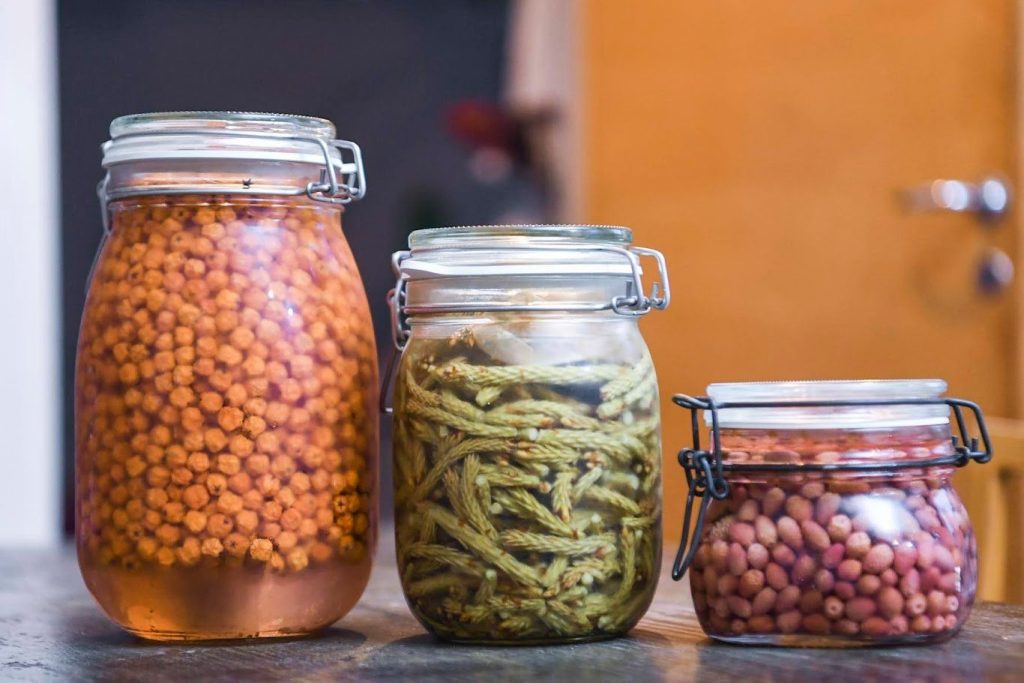Memory Cuisine: Reviving Recipes from Families and Cultures at Risk of Extinction

Unique Culinary Traditions on the Brink of Extinction
The world we live in is a vibrant tapestry of flavors and traditions, yet many unique recipes are fading from memory. As globalization spreads, traditional cuisines face the threat of extinction, particularly those belonging to vulnerable families and cultures. Reviving these recipes not only honors our ancestors but also preserves cultural identities for future generations. For example, many foods in Nigeria showcase a deep connection to the land and its people, reflecting local availability and age-old techniques. Traditional preparation methods and indigenous ingredients serve as markers of a community’s identity, where each dish carries a wealth of stories and heritage.
The Importance of Memory Cuisine
Memory Cuisine serves as a bridge connecting us to our roots. It encapsulates the flavors of our past, acting as a medium through which we can relive experiences and memories associated with family and communal gatherings. In Nigeria, dishes like:
- Ofada rice and Ayamase sauce— locally grown rice, paired with a spicy green pepper sauce, reflects the agricultural practices of the Yoruba people and is often served during festivities.
- Pounded yam and Egusi soup— this staple embodies resourcefulness in using groundmelon seeds, showcasing how communities have historically utilized indigenous produce for nutrition.
- Jollof rice with regional twists— every family has their version, often influenced by local flavor profiles, which narrates stories of migration, trade, and cultural exchange.
These dishes highlight the rich diversity of our culinary heritage, each telling a story of community, resilience, and innovation. They serve not just as sustenance but as essential touchstones of cultural expression.
Challenges Facing Traditional Recipes
Many factors threaten these culinary treasures, including:
- Urbanization— As more young Nigerians move to cities for work, traditional cooking practices are replaced with fast-food convenience, leading to a decline in the preparation of ancestral recipes.
- Loss of indigenous ingredients— Modern agricultural practices often favor mass-produced crops over local varieties, making traditional staples like certain types of yams and indigenous spices harder to find.
- Declining interest from younger generations— Many youths are swayed by globalization, leaning toward western cuisines, which can overshadow the rich culinary traditions they have inherited.
To combat these challenges, it’s essential to actively document and share these recipes through community cook-offs, cooking classes, and online platforms that focus on traditional cuisines. Engaging local chefs and elders to create cookbooks or digital content can help breathe life into these cherished foods, ensuring that they do not vanish into oblivion. By exploring Memory Cuisine, we can appreciate the intricate links between food, culture, and history while embracing the stories that make our meals meaningful. Together, we can build a future where traditional culinary arts thrive alongside contemporary innovations, enriching our cultural landscape for generations to come.

RECOMMENDED: Check out this similar article
Preserving Culinary Heritage through Community Engagement
To effectively tackle the decline of traditional recipes, community engagement emerges as a vital tool. The techniques and flavors passed down through generations are more than just food; they are emblematic of a community’s history and resilience. In Nigeria, where regional diversity flourishes, it becomes essential to foster an environment where these culinary narratives can be celebrated and revitalized. By focusing on Memory Cuisine, communities can embark on a journey to reclaim their gastronomic heritage.
Community-Based Initiatives
Actively involving local populations in the preservation of traditional recipes can yield remarkable results. Initiatives such as:
- Cooking workshops— where local chefs and elders lead hands-on sessions, sharing wisdom on traditional preparation methods.
- Food festivals— celebrations dedicated to showcasing regional dishes, inviting the younger generation to appreciate the culinary arts from their culture.
- Recipe-sharing platforms— online spaces where families and local cooks can upload their cherished recipes, creating a digital archive of culinary traditions.
These community-focused activities not only educate participants about the importance of traditional cooking but also inspire pride in their culinary heritage. For instance, a cooking workshop highlighting the art of making Okra soup can spark conversations about one’s ancestors, bridging generational gaps and fostering a deeper appreciation for local ingredients.
The Role of Storytelling in Memory Cuisine
Integral to the fabric of Memory Cuisine is the art of storytelling. Each dish tells a story that connects individuals to their past and cultural identity. Traditional recipes often come with anecdotes of gatherings, celebrations, and shared experiences that can be passed down through generations. Engaging younger audiences in these stories can reignite their interest in culinary heritage. For example:
- Stories behind dishes— recounting how Bitter leaf soup was prepared during festive occasions, instilling a sense of belonging and connection.
- Migrant experiences— discussing how dishes evolved as families relocated, incorporating new ingredients while maintaining traditional roots.
Encouraging oral histories to accompany these recipes ensures they are more than just lists of ingredients; they become living memories that reflect the essence of a community’s identity. By intertwining food with narrative, we can create a multidimensional understanding of culinary practices that encapsulate the nuances of everyday life.
Utilizing Technology to Amplify Forgotten Recipes
In today’s digital age, technology plays a crucial role in preserving these culinary treasures. Social media platforms offer a unique avenue where anyone can share their family recipes or document their cooking experiences. Innovative campaigns, such as hashtag challenges, can promote awareness of forgotten dishes, inviting users to share their takes or family variations. For instance, the popular concept of food blogs can serve as an engaging medium to reflect on family traditions surrounding dishes like Suya or Nsala soup, thereby fostering a renewed interest among the youth.
In conclusion, the revival of traditional recipes through community engagement, storytelling, and technology is paramount in ensuring that our culinary heritage is not lost to time. Embracing Memory Cuisine can lead to a richer and more inclusive food culture in Nigeria, where flavors and traditions thrive and are celebrated for their unique contributions to our identity.
| Advantage | Description |
|---|---|
| Cultural Preservation | Memory Cuisine serves to safeguard culinary traditions from families and cultures that are at risk of extinction, ensuring these rich legacies are not lost. |
| Community Connection | Through the sharing of recipes, Memory Cuisine fosters a sense of belonging and unity among people, connecting generations and strengthening community bonds. |
In today’s fast-paced world, the essence of culinary heritage often gets overshadowed by modern, rapidly consumable food trends. Memory Cuisine not only revives these endangered recipes but also plays an essential role in educating individuals about the significance of traditional cooking methods. By bringing awareness to these culinary practices, it encourages an appreciation for slow food movements and mindfulness in cooking.Furthermore, each recipe carries with it a unique story, rich in history, that can inspire and educate others. For instance, dishes that evolved from familial traditions often encapsulate local environments, socioeconomic factors, and unique agricultural practices, providing insights into a culture’s way of life. The act of preserving these recipes thus becomes an act of cultural storytelling, shedding light on influences that shaped communities over generations.Interested readers will find that exploring Memory Cuisine opens pathways to new culinary experiences, providing both a taste of history and a vision for future food sustainability.
ADDITIONAL INSIGHTS: Expand your understanding here
Integrating Memory Cuisine into Education and Tourism
The significance of Memory Cuisine extends beyond local communities; it has the potential to impact educational systems and tourism development. By integrating culinary heritage into educational curricula, future generations can be equipped with knowledge about not only their history but also practical cooking skills. This integration offers a unique platform for cultural exchange and understanding, helping students appreciate the rich tapestry of Nigerian culinary arts.
Culinary Classes in Schools
By introducing culinary classes focused on traditional recipes in schools, children can learn about the ingredients, techniques, and cultural significance of regional dishes. Programs like:
- After-school cooking clubs— providing an engaging environment for students to explore the field of culinary arts while bonding over shared experiences of preparing family recipes.
- Farm-to-table initiatives— encouraging school visits to local farms where children can learn about indigenous crops used in traditional meals, bridging the gap between producers and consumers.
These educational efforts not only promote a love for cooking but also instill a sense of responsibility toward preserving heritage. A local school may choose to highlight recipes like Jollof rice or Pounded yam in its curriculum, teaching students not just how to cook these staples but also the cultural stories behind them.
Culinary Tourism: An Economic Opportunity
Culinary tourism, or the practice of traveling for unique food experiences, is on the rise and offers a unique opportunity for promoting Memory Cuisine. By creating culinary tours that spotlight traditional dishes and cooking methods, communities can attract tourists interested in authentic cultural experiences. For example:
- Guided food tours— showcasing local markets, traditional kitchens, and cooking demonstrations of beloved dishes such as Egusi soup or Adalu.
- Culinary retreats— where tourists can immerse themselves in local gastronomy, participate in cooking classes, and enjoy meals prepared with locally sourced ingredients.
This growth in culinary tourism not only provides economic benefits but also fosters cultural exchange, allowing visitors to experience Nigeria’s diverse culinary landscape. Promoting a dish such as Catfish pepper soup as part of a culinary tour can help educate tourists on its cultural context and role in Nigerian celebrations, thus raising awareness and appreciation beyond national borders.
Collaborations with Food Influencers
With the rise of social media and online influencers, collaborations can significantly expand the reach of traditional recipes. Engaging food bloggers and influencers can rejuvenate interest in local cuisine by sharing recipes, cooking tutorials, and personal stories around communal meals. Partnering with influencers who have a genuine passion for traditional dishes enables the revival of forgotten recipes to reach a wider audience, sparking curiosity about their origins. For instance:
- Recipe challenges— influencers can encourage their followers to recreate family recipes, using specific hashtags to gather a collection of shared photos and stories.
- Live cooking sessions— conducted by local chefs or grandmothers, showcasing traditional techniques and narratives, offering a platform for real-time interaction with audiences.
As individuals engage with these platforms, the conversation surrounding Memory Cuisine can blossom, creating a sense of community and shared heritage among participants, regardless of their geographic locations.
RECOMMENDED: Check out this similar article
Conclusion: The Culinary Heritage Revival
The concept of Memory Cuisine serves as a vital conduit for preserving and reviving recipes and culinary traditions that are at risk of fading into oblivion. As we delve deeper into the intricate relationship between food, culture, and identity, we uncover the transformative potential of engaging communities in culinary education and tourism. By incorporating traditional dishes into school programs and promoting culinary tourism, we can not only foster a love for local cuisine but also stimulate economic growth and cultural exchange. This dual approach not only educates but also empowers the younger generation to embrace their culinary heritage, ensuring that the stories and techniques behind cherished family recipes are passed on.
Moreover, utilizing the power of social media and collaborations with food influencers opens new avenues for sharing and celebrating Memory Cuisine. From recipe challenges to live cooking sessions, these innovative platforms can captivate audiences, bridging the gap between generations and diverse cultures. As we continue to explore and promote the rich tapestry of Nigeria’s culinary landscape, we are reminded of the importance of preserving these cultural narratives for future generations. In doing so, not only do we safeguard our culinary heritage, but we also inspire curiosity and appreciation that transcend geographical boundaries.
Ultimately, reviving recipes from families and cultures at risk of extinction goes beyond food; it’s about connecting people, communities, and histories, ensuring that our shared narratives thrive and resonate in the modern world.


